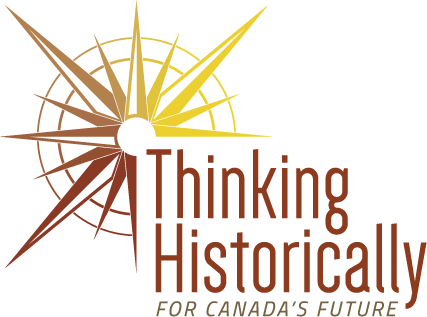From the Sidelines to the Circle: Collaborative History Education for Troubled Times
by Valeria Flores Zambrano, PhD Student, McMaster University
I came into the History Education in Troubled Times workshop as a graduate student with no chapter in the book. But what I found in those two days was a rare and unforgettable glimpse into the living heart of collaborative scholarship, and a redefined understanding of what counts as learning, contribution, and community.
On Day 1, I had the privilege of watching scholars gather around their work, offering peer feedback on chapters that will eventually become part of the edited collection. As someone still early in my academic journey, it’s not often that I get to watch researchers and educators at this level not just present finished ideas, but actually build, refine, and even challenge each other’s thinking in real time. There were moments of passionate agreement, moments of tension, and most powerfully, moments when ideas connected, and you could feel the shape of the chapters begin to shift.
I remember sitting there thinking: this is what scholarship is supposed to be. Not solitary work, but collective, dialogical, and dynamic. What struck me most was how different each contribution was, from climate crisis, commemoration, and gender justice to war, treaty responsibilities, and historical truth. But by the end of the day, connections had emerged between them that no one had predicted. Without anyone forcing it, themes of truth, relationships, critical hope, and reflexivity threaded their way through the day. And I think what I witnessed was something that’s hard to explain unless you were in the room: a kind of slow intellectual harmony forming across difference.

Day 1 of the History Education in Troubled Times workshop (Photo by Sara Karn).
Then came Day 2. This time, the circle widened. K–12 educators joined the room—teachers, curriculum specialists, and educational leaders who have been engaging with our “troubled times” every day, often without enough support. And instead of two separate groups (those who research and write, and those who “apply”), what unfolded was a shared conversation. Educators brought their own frameworks, their own questions, and their own realities. They helped ground the theory in the everyday. Suddenly we weren’t talking about “how this might work in the classroom,” but rather, we were seeing the ways it already has.
I was especially moved by how quickly the boundaries between “academic” and “non-academic” dissolved. There was no hierarchy in the room. Teachers brought the same level of inquiry and insight as the authors. Their questions pushed the discussions further. They reminded us that history education doesn’t just live in books or peer-reviewed articles: it lives in classrooms, in lesson plans, in school board politics, and in the quiet courage it takes to change one part of your teaching practice.
As I watched it all unfold, I kept thinking about how much my own high school history classes shaped me. How they opened up my world, gave me language for things I didn’t yet understand, and helped me imagine who I could become. To now be in a room helping shape what that experience might look like for future students was something I never imagined possible. It felt like coming full circle, to be part of growing and bettering the kind of history education that changed my life.
I left the workshop changed. Not only with a deeper respect for the vulnerability and care that goes into collective writing, but with a renewed sense of the stakes. These conversations are not abstract. They are shaping how young people come to know the past, understand the present, and imagine the future. And to have been there—to sit in that circle, to witness those ideas being born, sharpened, and shared—was an extraordinary gift.
I didn’t write a chapter, but I leave with more than notes. I leave with a new sense of what this work can be. And I carry with me the reminder that the most powerful scholarship is the kind that speaks in many voices, and the kind that listens.
Valeria Flores Zambrano is a PhD student of Latin American Environmental History at McMaster University researching Pinochet’s use of different environments as weapons and tools of terror during the Chilean dictatorship. She’s a research assistant for the History Education in Troubled Times project. Valeria is also the Project Coordinator for the Latin American Network at McMaster University (LANMU) and a Student Ambassador for the Access Program. She’s passionate about teaching and learning, community engagement, and all levels of education.
